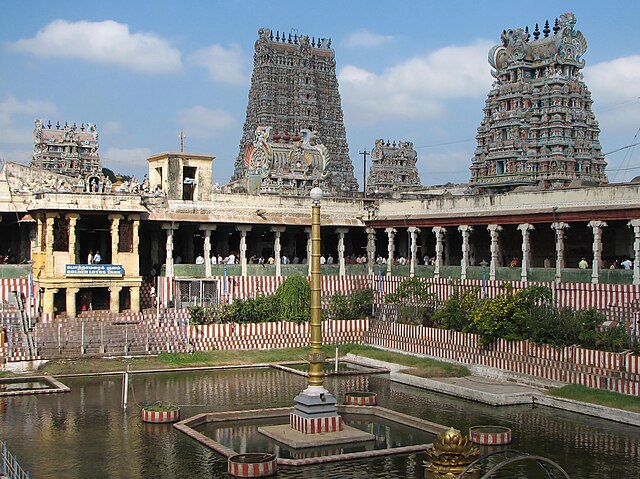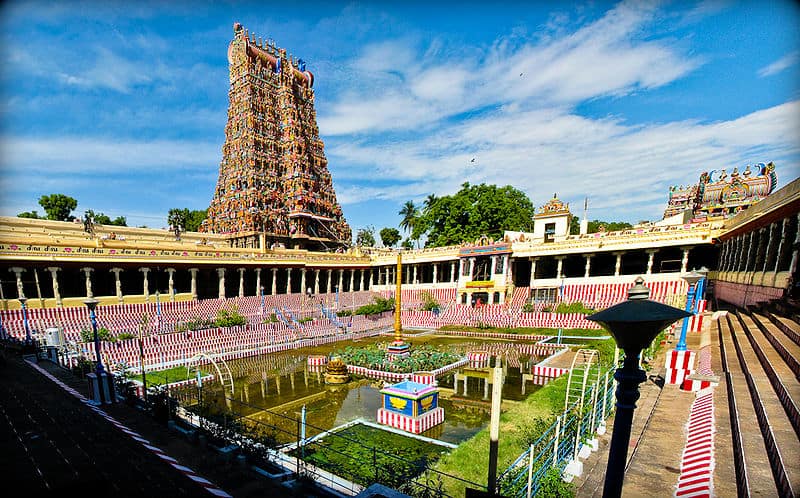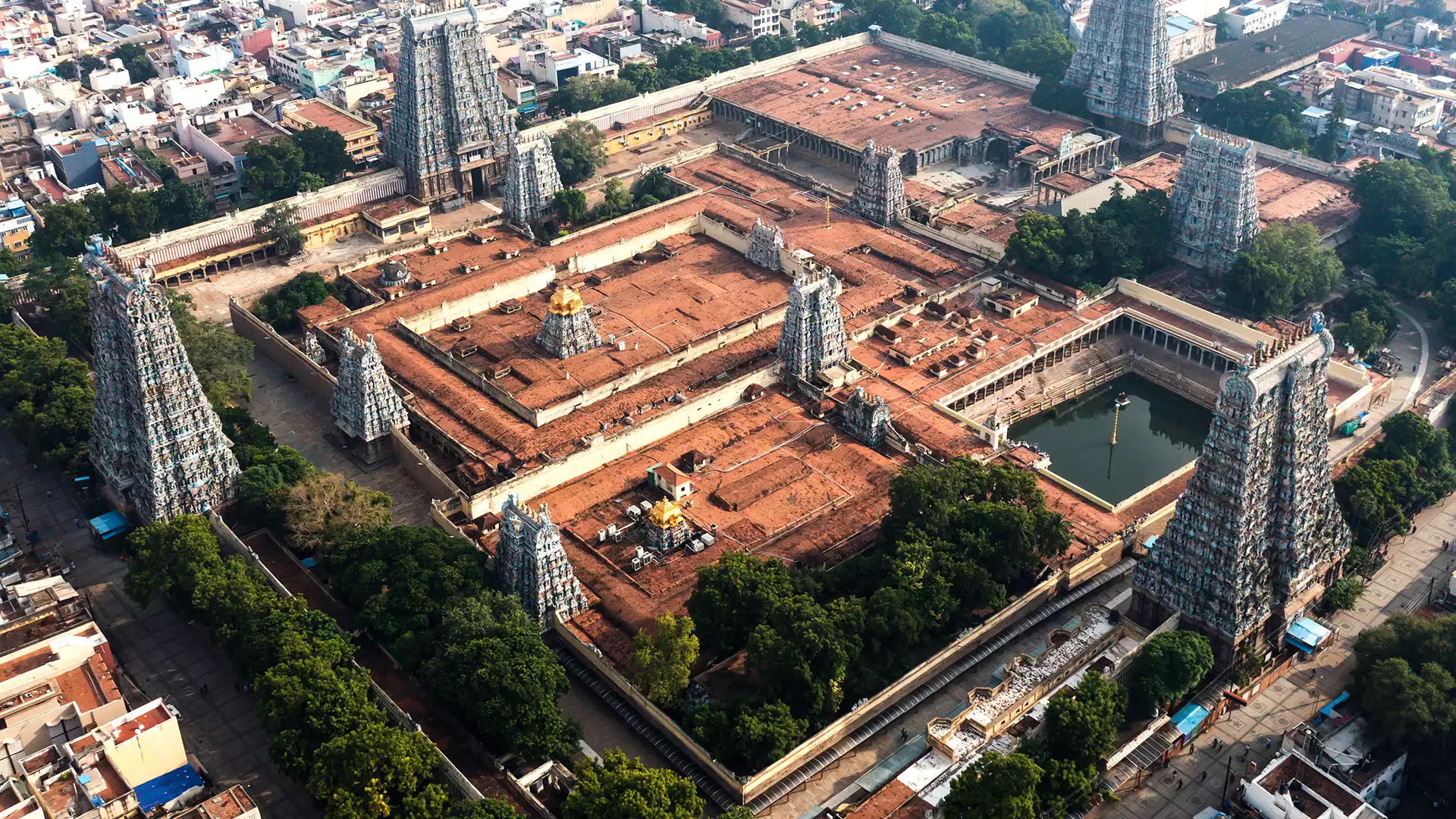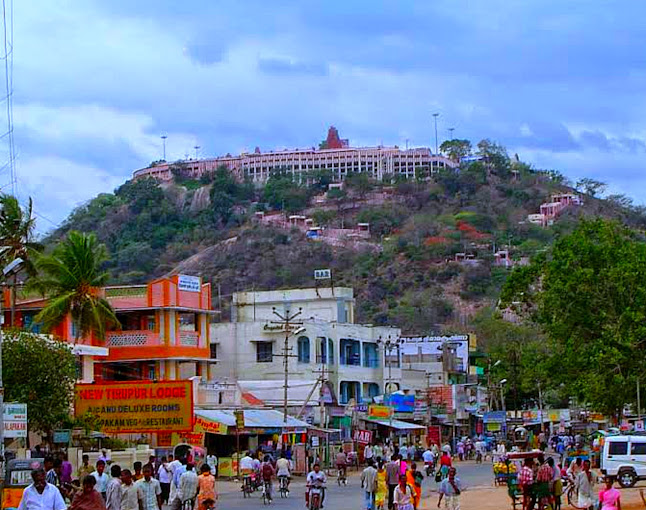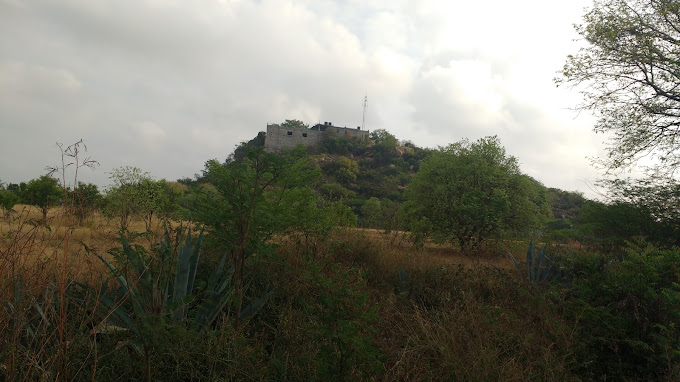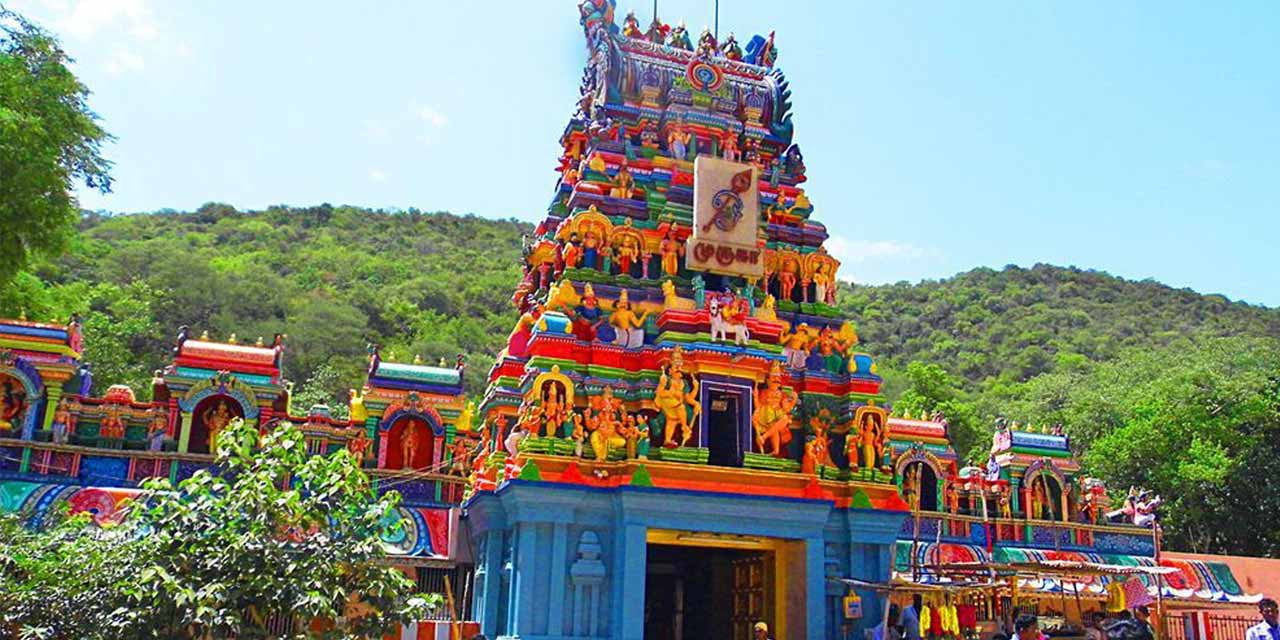Nestled along the southern bank of the serene Vaigai River in the temple city of Madurai, Tamil Nadu, the Arulmigu Meenakshi Sundaraswarar Temple, also known as Arulmigu Meenakshi Amman Thirukkovil, stands as an indelible testament to the rich tapestry of Hindu spirituality and architectural brilliance. This historic sanctuary is a divine ode to the goddess Meenakshi, an embodiment of Shakti, and her divine consort, Sundareshwarar, a manifestation of Shiva.
At the heart of the ancient temple city of Madurai, an epicenter of cultural and religious significance, the Arulmigu Meenakshi Sundaraswarar Temple is steeped in antiquity, with references dating back to the 6th century CE in the Tamil Sangam literature. This sacred abode is counted among the Paadal Petra Sthalams, a revered collection of 275 Shiva temples extolled in the verses of Tamil Saiva Nayanars from the 6th to the 9th century CE.
The temple’s majestic west tower, or gopuram, not only graces the skyline but also serves as the inspirational model for the design of the Tamil Nadu State Emblem—a symbol that resonates with the cultural and spiritual heritage of the region. As pilgrims and visitors traverse the temple’s hallowed grounds, they embark on a spiritual journey through the corridors of time, immersing themselves in the divine aura and architectural splendor that define this sacred haven.
Arulmigu Meenakshi Sundaraswarar Temple stands not merely as a physical structure but as a living testament to the enduring devotion of the Tamil Saiva Nayanars, the divine union of Meenakshi and Sundareshwarar, and the cultural legacy that continues to thrive along the banks of the Vaigai.
Madurai Meenakshi Sundareswarar Temple: A Tapestry of Timeless Devotion and Architectural Splendor
Standing proudly on the southern bank of the Vaigai River, the Madurai Meenakshi Sundareswarar Temple, also known as Arulmigu Meenakshi Amman Thirukkovil, is not just a sanctuary; it’s an architectural marvel woven into the spiritual fabric of Tamil Nadu, India. With its roots tracing back to the reign of Pandyan Emperor Sadayavarman Kulasekaran I (1190 CE–1205 CE), this sacred haven has endured centuries, witnessing the ebb and flow of history.
The early contributions of Emperor Kulasekaran I are etched in the main portions of the three-storeyed Gopuram, standing sentinel at the entrance of the Sundareswarar Shrine, and the central sanctum of the Goddess Meenakshi. A poet-saint king, Kulasekaran I’s legacy extends beyond the temple walls, credited with a poignant poem named Ambikai Malai and the creation of shrines dedicated to Natarajar, Surya, Ayyanar, Vinayagar, Kariamalperumal, and Kali.
Further chapters of the temple’s evolution were written by Maravarman Sundara Pandyan I and Maravarman Sundara Pandyan II, who added gopurams and pillared corridors, enriching the visual and spiritual narrative of the sacred space. However, the temple faced adversity in the 14th century when the armies of the Delhi Sultanate, led by Malik Kafur, plundered and desecrated the site. The phoenix-like rise from these ashes commenced with the Vijayanagara Empire’s rebuilding efforts, and subsequent fortification and expansion by Nayak ruler Vishwanatha Nayakar in the 16th century.
Today, the restored complex boasts 14 towering gopurams, ranging from 45–50 meters in height, each a testament to the artistic prowess of the builders. Pillared halls such as Aayirankaal, Kilikoondu-mandapam, Golu-mandapam, and Pudu-mandapam echo with the footsteps of devotees, and the vimanas above the sanctums of Meenakshi and Sundaresvara gleam with the luster of gold.
This major pilgrimage destination within the Shaivism tradition not only honors Meenakshi Devi and Shiva but also embraces Vishnu in narratives, sculptures, and rituals. The temple’s inclusive spirit extends to deities like Lakshmi, Krishna, Rukmini, Brahma, and Saraswati, creating a harmonious blend of Vaishnava and Shaiva traditions. The annual Meenakshi Tirukalyanam festival, celebrated with grandeur and a chariot procession, transforms the temple into a vibrant tapestry of cultural expression.
Adjudged the best ‘Swachh Iconic Place’ in India under Swachh Bharat Abhiyan, the Madurai Meenakshi Sundareswarar Temple continues to be not just a spiritual beacon but also a cultural touchstone that attracts pilgrims, visitors, and admirers from all corners of the globe. In the sacred precincts of Madurai, it stands tall as a testament to the enduring power of devotion, artistry, and cultural resilience.
Gallery Of Madurai Meenakshi Sundareswarar Temple
